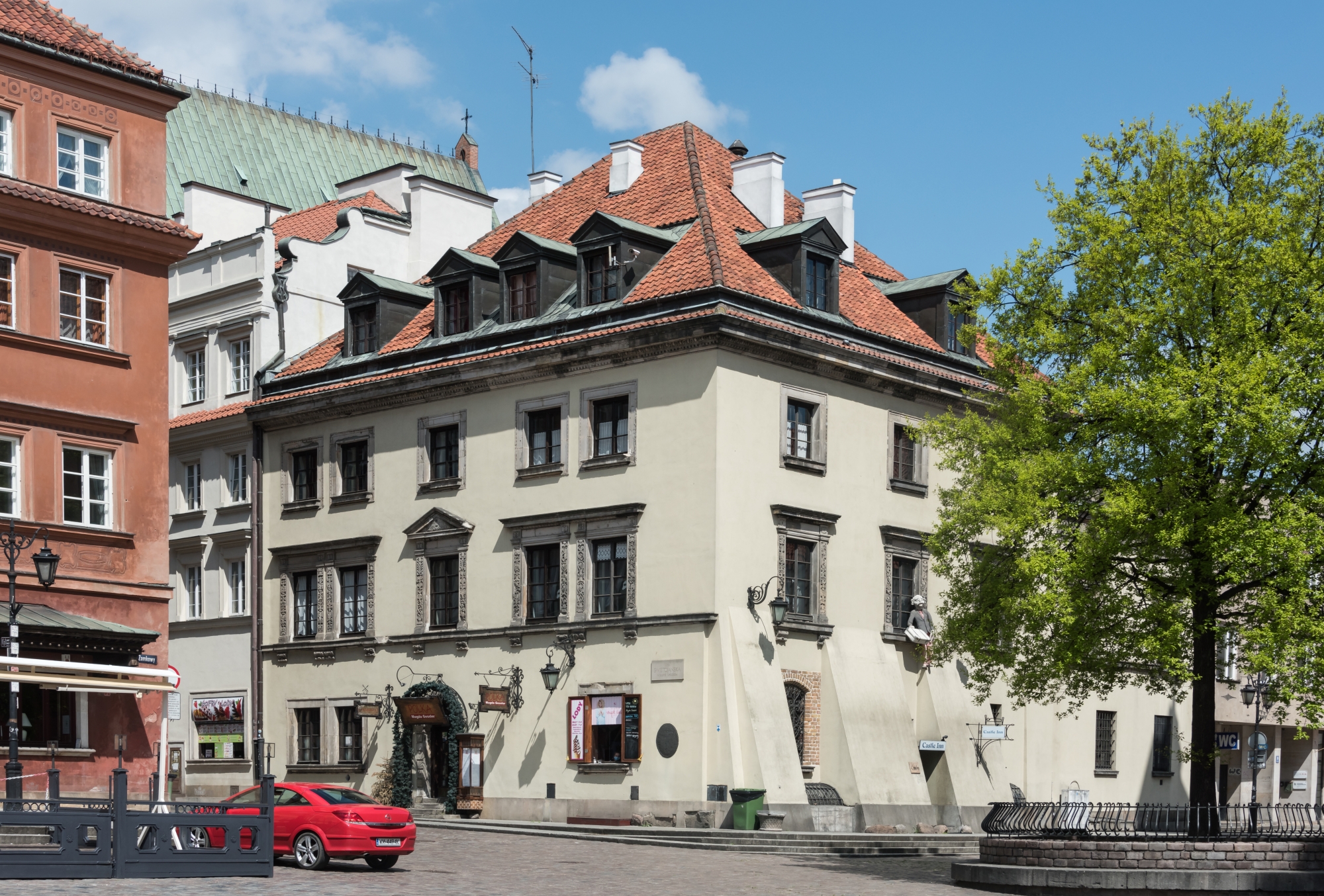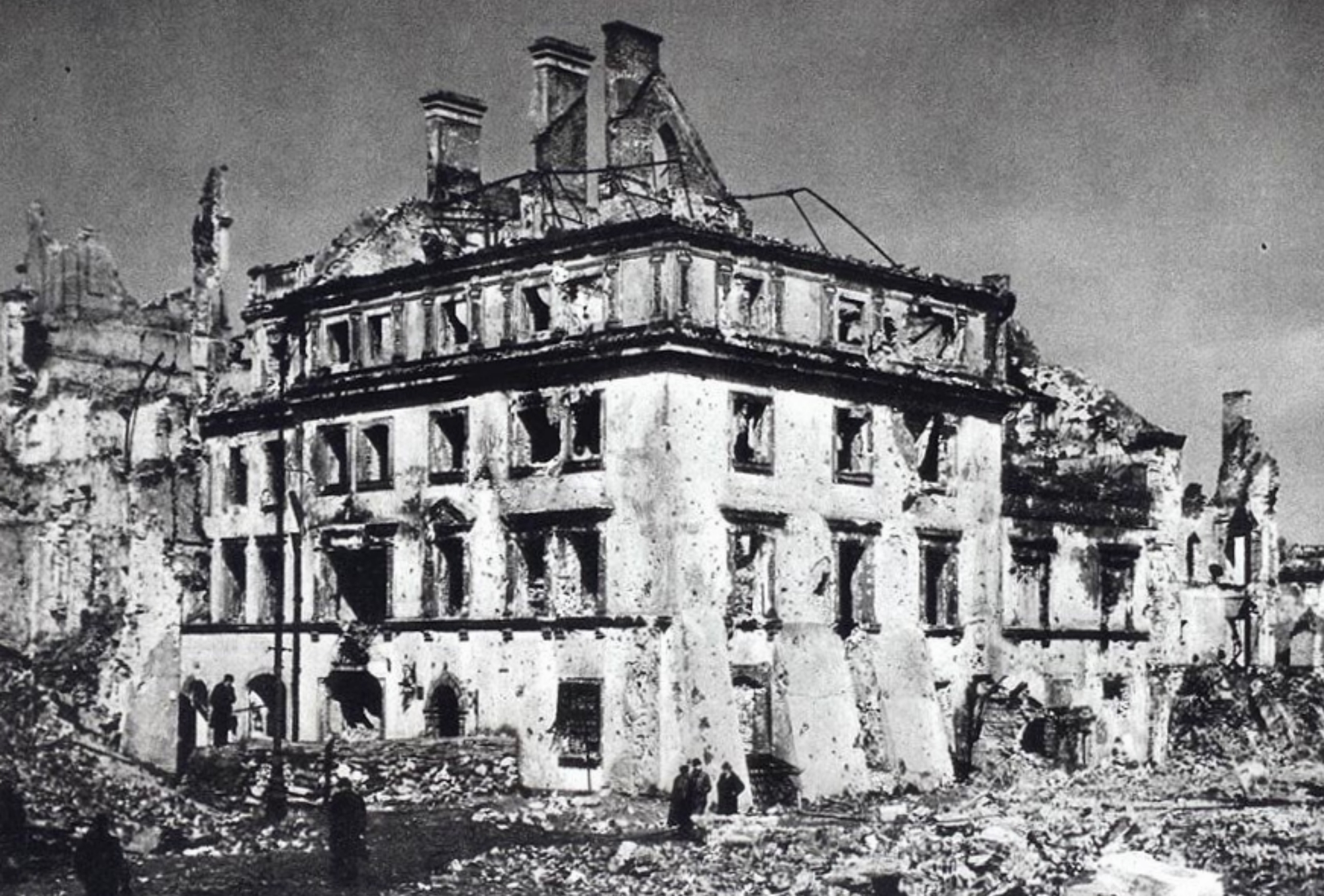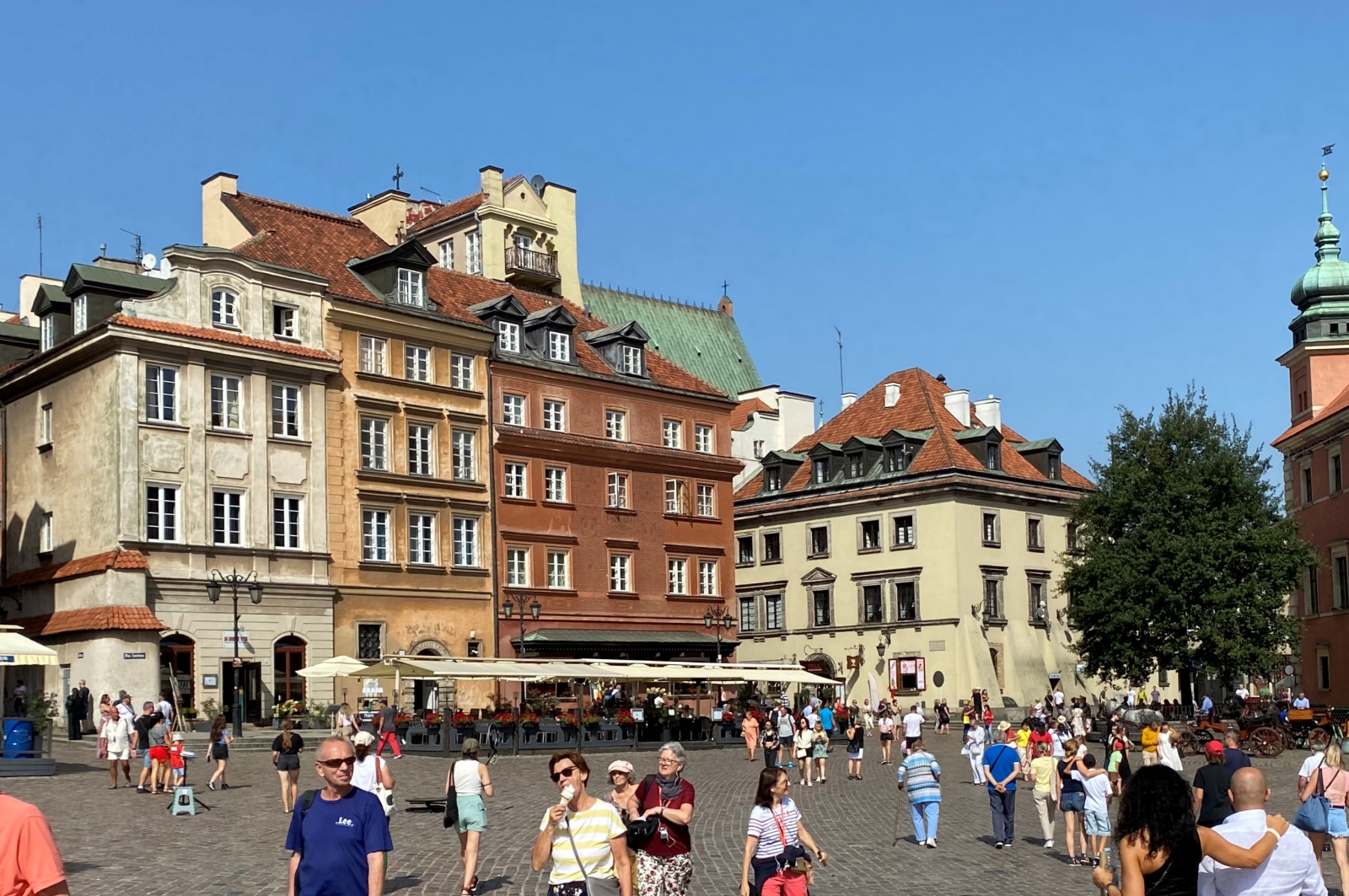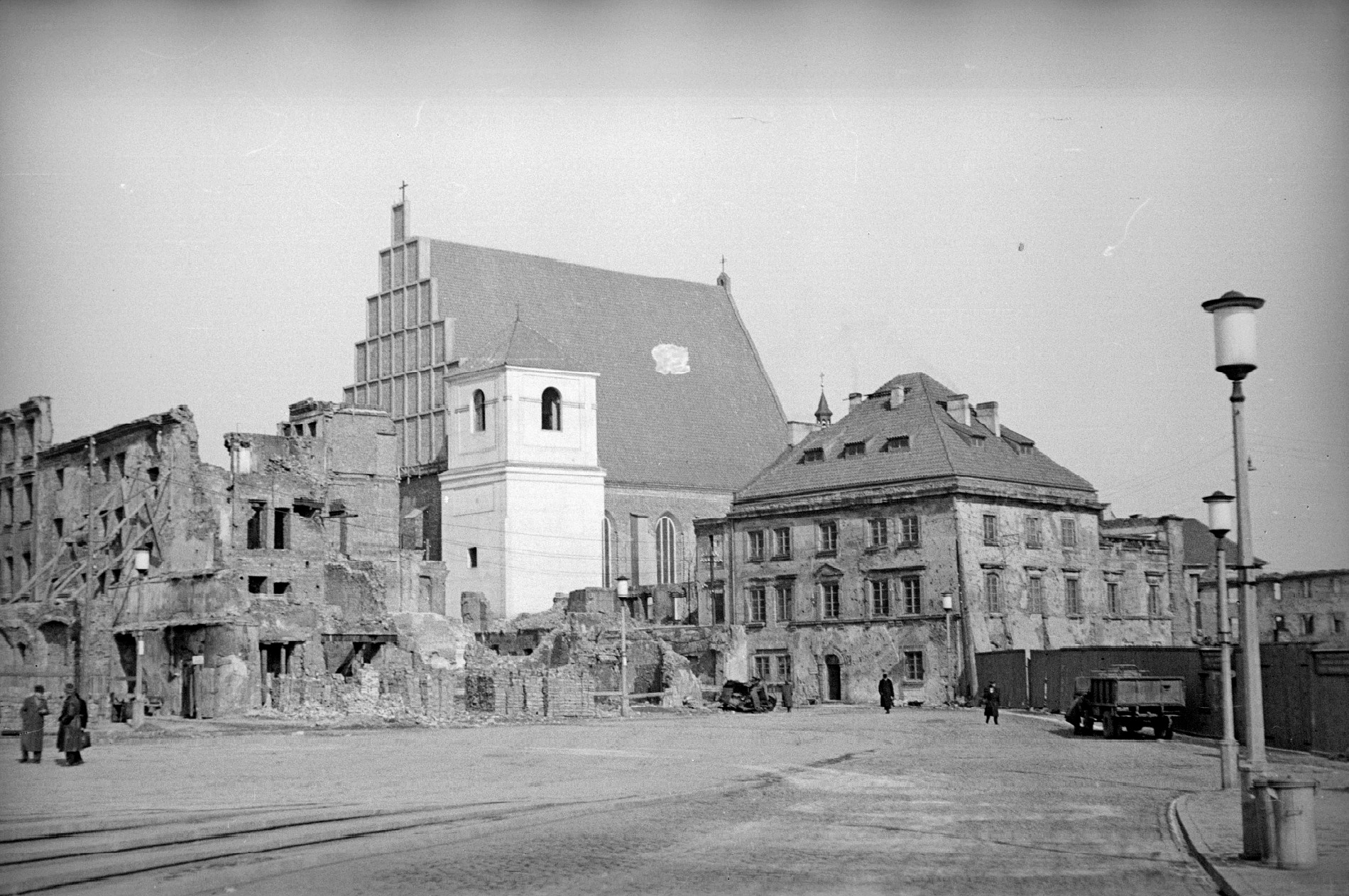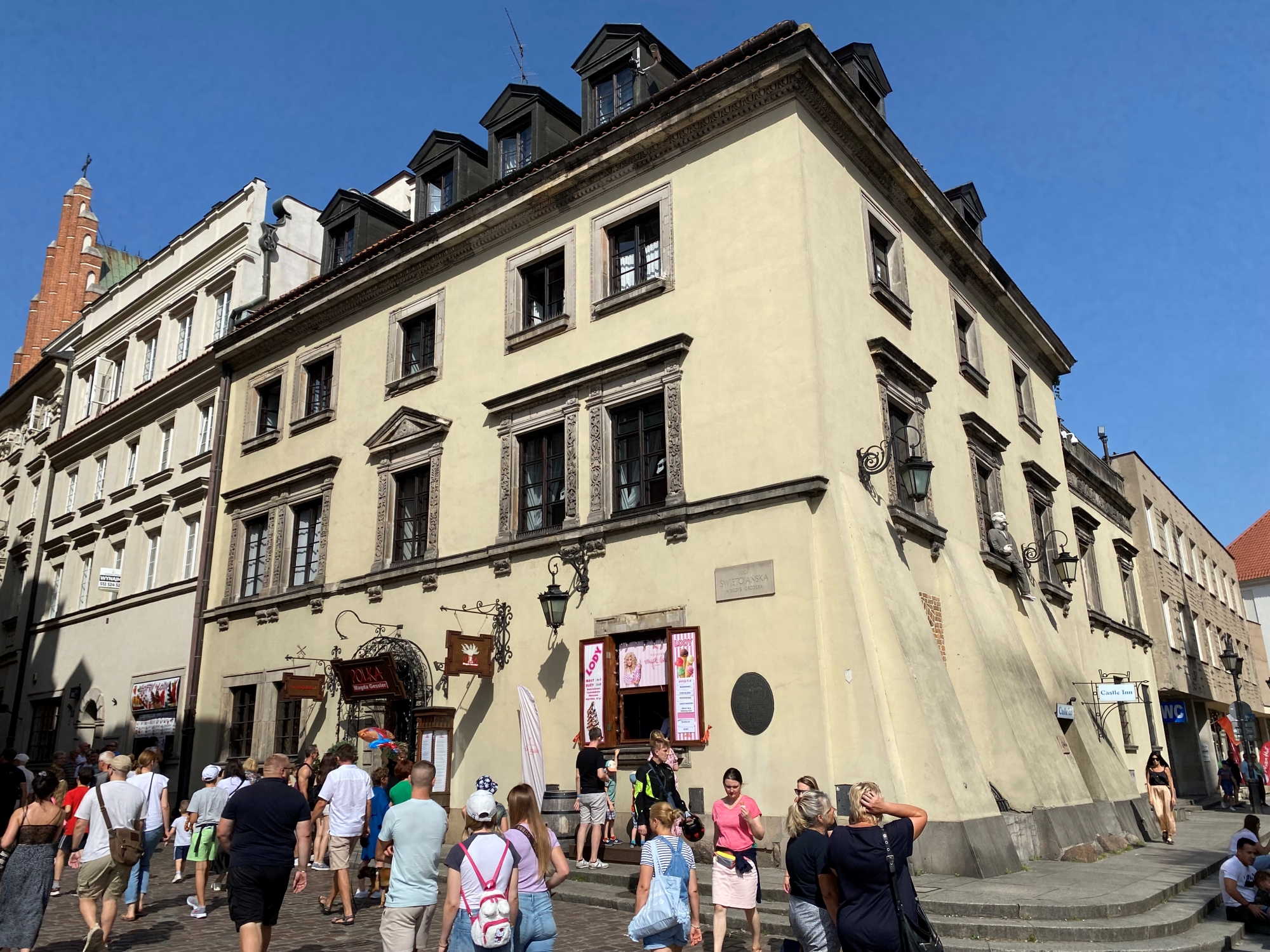In most studies on the destruction of Warsaw’s Old Town during World War II, one can read that it was demolished in more than 90 per cent. The Kościelski or Mansjonaria tenement house, standing in the corner of Castle Square, was so lucky that most of its walls and interior walls survived, so it can be counted among this handful ofsurvivors
The first owners of the property on which the tenement is located were the Mazovian princes. In 1433, it passed into the hands of the mansionist priests who ministered at the nearby Collegiate Church of St John. The brick building was erected before 1478
Photo: whiteMAD/Mateusz Markowski
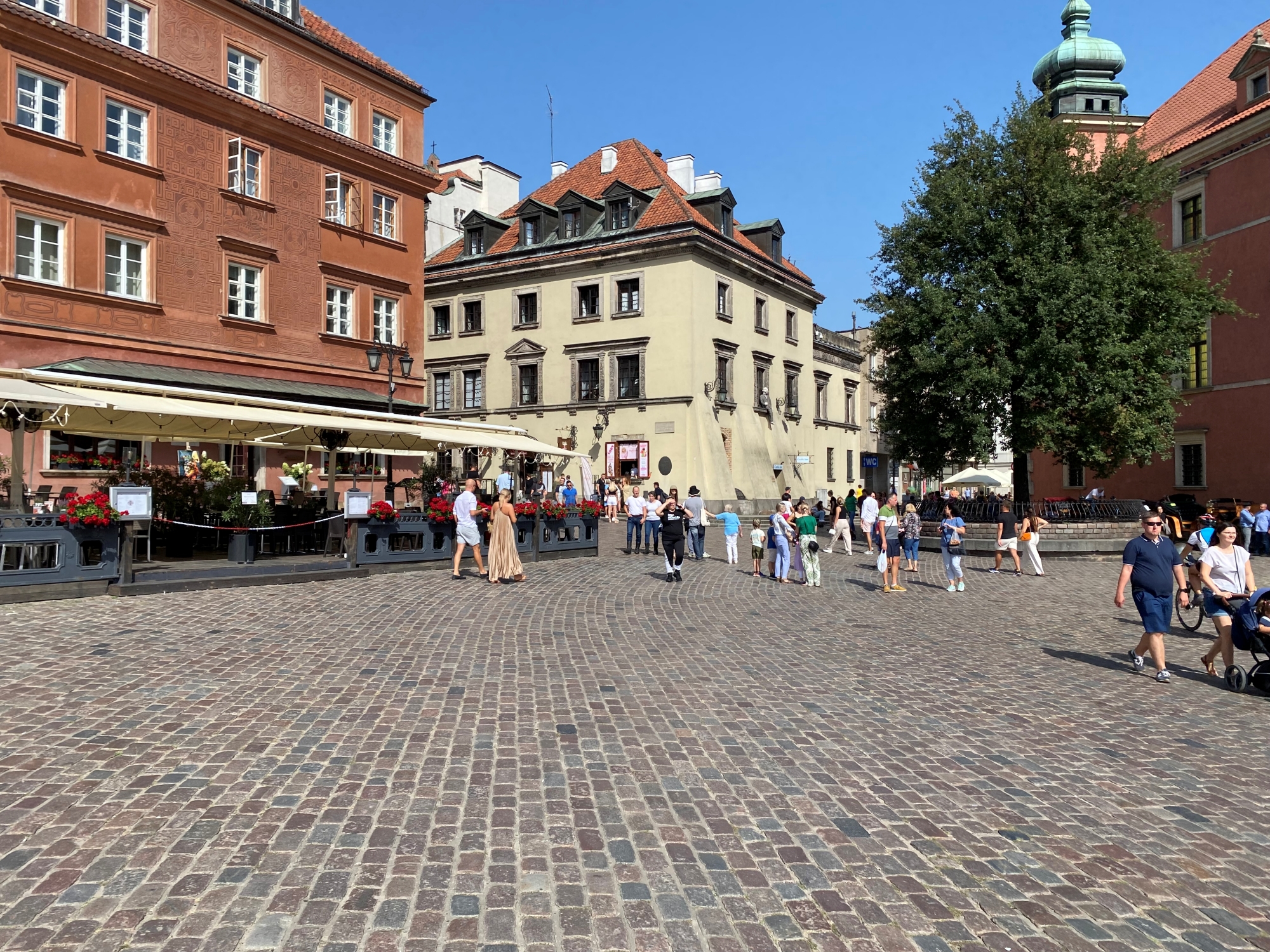
A reconstruction in 1688 gave the building Baroque features. One remnant is the rusticated stone portal with the obliterated date “1688” and a keystone with two crossed arrows. Three wings and a small courtyard were created in the gradually built-up rear part of the plot. Before 1790 it was raised by one storey. Between 1817 and 1818, during the tidying up of Castle Square, the adjacent buildings were demolished and the south elevation exposed
Mansions in 1945 and 2023. Source: Warsaw 1945 Emilia Borecka & Leonard Sempoliński Państwowe Wydawnictwo Naukowe Warsaw 1975 and Photo: whiteMAD/Mateusz Markowski.
In 1822, the congregation of mansions caring for the building ceased to exist, so that it became the property of the State Treasury. Soon afterwards there was a reconstruction which obliterated the historic appearance of the façade. In 1918, Władysław Kościelski, a poet, publisher and patron of the arts, became the owner of the building. Between 1918 and 1921, it was rebuilt to a design by Juliusz Nagórski in accordance with the instructions of the Society for the Protection of Monuments of the Past. The building was then restored to some of its previously blurred features and modernised. After the owner’s death, the building, which between the wars had some of the most representative interiors in the capital, became the official residence of ambassadors
Castle Square during reconstruction in 1951 and 2023. Source: NAC – National Digital Archive www.nac.gov.pl/ and photo: whiteMAD/Mateusz Markowski.
In September 1939, the roof of the building was partially destroyed. During the Warsaw Uprising in August 1944, the roof burned down again, but the outer walls and partly the inner walls and vaults survived. The mansion house was rebuilt in 1950-1953 according to a team project under the direction of Władysław Jastrzębski, with the roof lowered by one storey and the roof changed, to be used as offices of the Management of the Rebuilding of the Castle of the State Construction Company for Conservation Works and Monumental Architecture. The building was lowered at the request of Jan Zachwatowicz, who wanted to expose the view of the facade of St John’s Cathedral in this way
It was one of the first rebuilt and earliest used buildings in the Old Town. In 1965 it was entered in the register of historical monuments. In the second half of the 1970s, due to the laying of new paving and the lowering of the level of Castle Square, the building was surrounded by a new stone plinth and the boulders of the foundation were exposed. Between 1988 and 1992 the building was rebuilt for the Royal Castle
Source: whu.org.pl
Read also: Architecture | Tenement | City | Warsaw | Architecture in Poland


